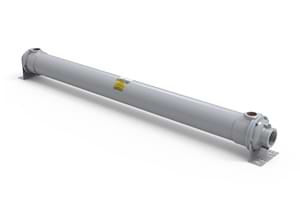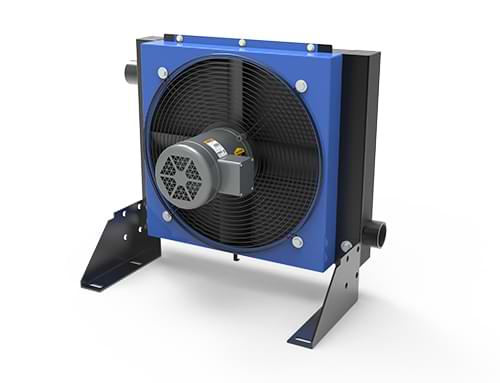Aftercoolers for Bead Blasting Applications
This process is widely valued in industries like manufacturing, automotive, and aerospace for its ability to achieve a uniform, smooth finish without significantly altering the workpiece's dimensions. Unlike more aggressive methods like sandblasting, bead blasting is gentler, making it ideal for delicate parts or when a refined aesthetic is required.
Applications
- Bead Blasting Versatility: Bead blasting, using glass beads, offers a gentle, precise surface finish for industries like automotive and aerospace, with types like wet and dry blasting adapting to various materials and needs, ensuring uniform results without structural damage.
- Diverse Applications: From restoring car parts to finishing medical implants, bead blasting’s non-abrasive nature suits delicate and industrial tasks alike, providing smooth, clean surfaces for functional and decorative purposes across multiple sectors.
- Aftercoolers' Critical Role: Aftercoolers cool and dry compressed air in bead blasting, preventing moisture-related issues like clumping or corrosion, ensuring consistent performance, equipment longevity, and high-quality finishes in precision applications.
Water Cooled Aftercoolers
Compressor Cooling
- Fixed or Removable Tube Bundles
- Material Options Available
- Standard and Custom Options

Air Cooled Aftercoolers
Compressor Cooling
- Use Ambient Air to Cool
- Variety of Motor Options
- Standard Pressures of Up To 250 psi

Understanding Bead Blasting: Types, Applications, and the Role of Aftercoolers
Types of Bead Blasting
Bead blasting can be categorized based on the equipment and media used. Here are the primary types:
- Wet Bead Blasting: Combines glass beads with water to reduce dust and heat, offering a cleaner process suitable for sensitive materials like aluminum or stainless steel.
- Dry Bead Blasting: Uses compressed air to propel dry beads, ideal for heavy-duty cleaning or deburring on tougher surfaces like steel or cast iron.
- Suction Blasting: Employs a vacuum system to draw beads into the airstream, commonly used in smaller, precision applications.
- Pressure Blasting: Utilizes high-pressure systems for faster, more aggressive cleaning, often applied to larger industrial components.
Applications of Bead Blasting
Bead blasting’s versatility makes it a go-to solution across multiple sectors. Its non-abrasive nature ensures it can clean or finish surfaces without causing structural damage, while its adaptability suits both small-scale and industrial needs.
- Automotive Industry: Restores engine parts, removes rust, and preps surfaces for painting or coating.
- Aerospace: Cleans turbine blades and other precision components without compromising integrity.
- Medical Devices: Finishes surgical tools and implants, ensuring a smooth, sterile surface.
- Decorative Finishing: Creates satin or matte finishes on jewelry, architectural hardware, or consumer goods.
Why Aftercoolers Are Important in Bead Blasting
In bead blasting systems, compressed air is the driving force behind media propulsion. However, compressing air generates heat and moisture, which can compromise the process. This is where aftercoolers play a critical role. An aftercooler is a heat exchanger that cools compressed air after it leaves the compressor, condensing moisture into a removable form before it reaches the blasting equipment.
Without an aftercooler, warm, moist air can cause glass beads to clump, leading to inconsistent blasting results or equipment clogs. Moisture can also corrode metal workpieces or contaminate surfaces, especially in applications requiring high cleanliness, like medical or aerospace manufacturing. By maintaining dry, cool air, aftercoolers ensure optimal performance and extend the lifespan of both the blasting media and the machinery.
Additionally, aftercoolers enhance efficiency. Dry air prevents interruptions from maintenance issues like clearing clogged lines, allowing for continuous operation. In precision tasks, such as achieving a uniform satin finish, the consistent airflow provided by an aftercooler is indispensable.
In summary, bead blasting is a versatile, effective finishing method with diverse applications, supported by various techniques tailored to specific needs. Pairing it with aftercoolers ensures the process remains reliable, efficient, and high-quality, making them an essential component in modern blasting setups.


